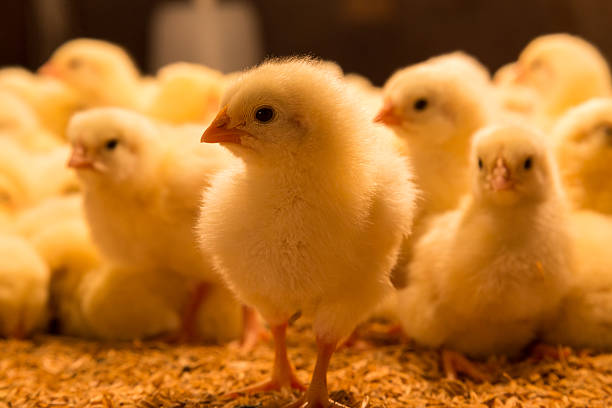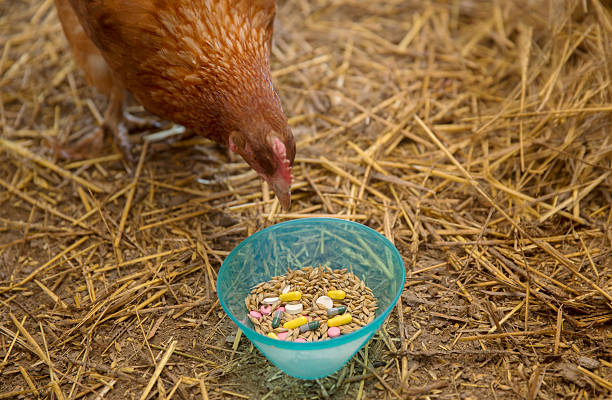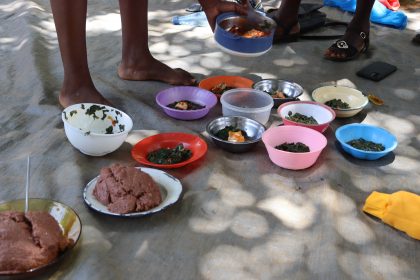Research shows poultry farmers lace birds with antibiotics, which prevent infections, increase appetite, and promote faster growth but cause gastroenteritis, liver damage and antimicrobial resistance
The deep-fried chicken that Kenyans consume voraciously could be their undoing, health-wise, because scientific evidence suggests the birds’ rapid growth may be turbocharged with antibiotics.
In Kenya, antibiotics are commonly used in livestock farming for several reasons: the treatment and prevention of infections and, controversially, for growth promotion. Antibiotic classes such as tetracycline and sulfonamide have been found to enhance growth rates and improve feed efficiency in livestock, where the animals gain the same amount of weight but on less feed.

A 2021 study titled Antimicrobial Use by Peri-urban Poultry Smallholders of Kajiado and Machakos Counties in Kenya by Florence Mutua, affiliated with the International Livestock Research Institute (ILRI), examined antibiotic use by this population of farmers.
The research found that 41% of them used veterinary drugs—including antibiotics, dewormers, disinfectants, traditional remedies, vitamins, and other products—to boost growth in non-poultry species. Of the 112 poultry farmers surveyed, 27 (24%) reported using antibiotics to promote the growth rate in their birds.
While the mechanism is not fully understood, some scientists believe that antibiotics increase weight gain by reducing the population of harmful microbiota in the animals’ gastrointestinal tracts. This creates a more favourable environment for digestion and nutrient absorption, allowing animals to utilize their feeds efficiently.
Rapid growth, risky practices
A study titled Use of Non-Antibiotic Growth Promoters in Chicken Broiler Production in Kenya by Dr Odede Rezin Ochieng, a veterinary doctor and technical director at Sidai Africa, compared the growth rates of broilers fed on regular animal feeds, feeds containing antibiotic growth promoters (AGPs), and those supplemented with organic acids.
The findings showed that birds raised on diets with antibiotics experienced quicker growth and improved feed conversion efficiency than those on pure animal feeds or feeds enhanced with organic acids. Additionally, broilers fed on low-dose antibiotics exhibited the highest feed intake, indicating a stimulated appetite.

According to the Commonwealth Agricultural Bureaux International (CABI) blog, the veterinary use of antibiotics as growth promoters in Kenya is linked to economic gains─ they contribute to higher yields of meat, milk, and eggs, hence boosting food security and supporting livelihoods.
The Ministry of Agriculture and Livestock reports that commercial poultry farmers in Kenya typically rear between 500 and 5,000 birds, with larger farms exceeding these numbers.
When hundreds of birds are kept in confined spaces, this can lead to stress and poor hygiene, creating a perfect breeding ground for bacteria. Consequently, farmers put antibiotics in animal feeds and water to prevent the spread of infections. Flocks of chickens end up being dosed with antibiotics, whether sick or not.
The scale-up of antibiotics, primarily as a substitute for good nutrition and proper hygiene in livestock production, including poultry, is unsustainable because it contributes to antimicrobial resistance. It also raises concerns about food safety and environmental impact.
A Breeding ground for resistance
In 2021, Harrison Rware, the learning, monitoring, and evaluation officer at CABI in Africa, carried out a study that sought to examine veterinary antibiotic use in Kenya. He collected data from Machakos, Isiolo, Narok, Elgeyo Marakwet, and Trans Nzoia counties.
His findings revealed that 80% of the surveyed farms used antibiotics; 58% administered antibiotics themselves, often without a prescription from the veterinary professionals. The same study found that 95% of farmers had acquired antibiotics without prescriptions. They relied on over-the-counter antibiotics, contributing to the risk of managing undiagnosed diseases, using the wrong medicine, and/or administering incorrect dosages. This can lead to the emergence of bacteria that are resistant to antibiotics.
Salmonella spp., Campylobacter spp., and Escherichia coli are some of the most prevalent bacteria responsible for infections in poultry species in Kenya.
The World Health Organization (WHO) states that the use of antibiotics like ciprofloxacin in livestock has led to the emergence of ciprofloxacin-resistant strains of Salmonella spp., Campylobacter spp., and E. coli, which have caused difficult-to-treat human infections.
These resistant bacteria (superbugs) are transmitted to humans via direct contact between animals and people or through the food chain and the environment. For example, poultry meat can become contaminated with drug-resistant Campylobacter spp. through faeces during butchering. Consuming such chicken that is undercooked may lead to gastroenteritis, which is characterized by symptoms such as diarrhoea, abdominal cramps, fever, nausea and vomiting.
Antibiotic-resistant genes have been detected in humans, suggesting indirect evidence of transfer through the food chain. In his study of Escherichia coli, Dr. Dishon Muloi, a veterinary scientist and affiliate of ILRI, identified antibiotic-resistance genes in humans, livestock, and wildlife in Nairobi. This revealed the interrelationship of these populations, with the results aligning with a similar study conducted in Maasai Mara by Winfridah Onyari, a Kenyan veterinary researcher.
What needs to change
Indeed, the accidental discovery of penicillin by British scientist Alexander Fleming in 1928 marked the dawn of the antibiotic era, revolutionizing human and veterinary medicine. Antibiotics treated previously troublesome infections like cow mastitis. They have also enhanced livestock productivity, reshaping agriculture.

However, the overuse and misuse of antibiotics have given rise to resistant bacterial strains ─ an unfortunate battle for humans and future generations.
The use of antibiotics in livestock can impact public health. Failure to observe withdrawal periods can result in animal products with antibiotic residues. According to the WHO, consuming such contaminated products increases the risk of developing allergic reactions or liver damage in people with compromised immunity.
As such, distributing veterinary products directly to farmers vis-à-vis doing so through animal health providers may lead to higher antibiotic use, potentially driving the development of antimicrobial resistance, while strengthening the role of veterinarians and other animal health professionals is vital to address this issue.
To address antimicrobial resistance (AMR) in animals and decrease its impact on Kenyans, the government can improve surveillance systems that track antibiotic usage and resistance patterns, ensuring accurate data collection and analysis.
It can enact legislation to limit non-therapeutic antibiotic usage, promote alternatives such as enhanced sanitation, biosecurity measures, and probiotics, and educate farmers and veterinarians about the dangers of AMR and responsible antibiotic use.
Finally, experts can implement the One Health concept, which requires collaborative efforts among the health, agriculture, and environmental sectors, as well as research investments to produce novel vaccines, treatments, and diagnostic tools. These initiatives attempt to reduce antibiotic abuse, prevent the spread of resistance, and protect both animal and human health for long-term sustainability.
Dr Sharon Wambua is a pharmacist and creative non-fiction writer.






















